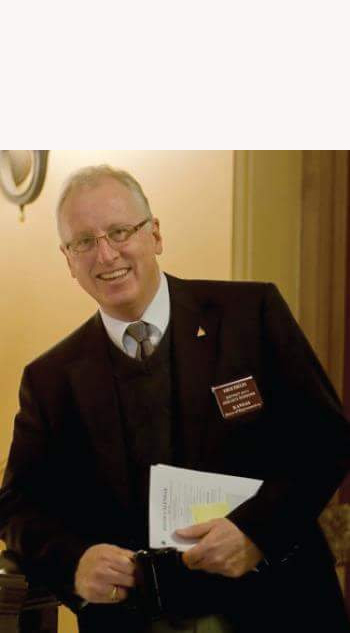
Dear Constituent,
It was the best of times, it was the worst of times. I’ve been inside voting or outside observing the legislature for more than 18 years and it was a year to remember. We passed some good, killed some bad. Some good bills were killed and some bad bills got through. This was the shortest session in anyone’s memory, recent or otherwise, and the campaign cycle has officially begun. Do you sense a “but” coming?
The only caveat to that is the Kansas Supreme Court’s consideration of the school finance bill detailed below.
SCHOOL FINANCE
My colleague, Rep. Melissa Rooker, is well-versed in all things K-12 education and she produced a series of reports detailing the cost studies commissioned, House’s work on education this year, the bill sent to the Court at the end of the regular session (SB 423), the $80 million drafting error included in the bill, and the “trailer bill” to fix that error. For an easy-to-read, thorough, and well-cited overview of the education process this year, I highly encourage you read the series.
When we came back to session on April 26, we had two jobs – pass the budget to “true up” the budget passed last year with this year’s actual revenues, and pass a “trailer bill” to fix the error mentioned above. We did both, to varying degrees of success, depending on where you sit.
House Substitute for Senate Bill 61 (H Sub SB 61) became a compromise of fixing the drafting error and some taking the opportunity to include further policy measures some weren’t able to slide into the last bill. It includes a requirement for all districts to have at least a 15% Local Option Budget (LOB) which is derived from local property taxes levied by our school board. Most districts have far higher than that already, but the bill seeks to ensure districts aren’t keeping local taxes down in order to secure more funding from the state. How LOB is derived will also change by using the current year’s funding total instead of the previous year, which will make the overall amount higher.
The original bill (SB 423) increases per pupil spending by $548, which, adjusted for inflation still would not meet what funding would have been had the legislature maintained the level of funding deemed constitutional following the 2005 Gannon lawsuit. The bill includes some positive steps:
- Infusing new money into 4-year old at-risk programs and expanding them to 3-year olds if classes are not full.
- Adds more than $74 million in special education funding over five years, and
- Launches a mental health pilot project to partner community mental health centers and school districts to work together to improve mental health among our students.

If you take last year’s bill and combine it with this year’s bill, the increases are as follows:
Year-Over-Year Increase
2017-18 194,705,228
2018-19 189,428,148
2019-20 105,500,000
2020-21 105,500,000
2021-22 113,100,000
2022-23 115,500,000
6-yr. total 823,733,376
The bill passed the Senate, 31-8, and the House, 92-27. I voted yes.
Specific to my constituents, our districts will see the following in new money:
Victoria: $82,155
Hays: $647,415
TAX CUTS
There’s nothing more appropriate than a description of the hundreds-of-millions we need to put in to properly fund our schools, than to follow that conversation with one about tax cuts. It was odd to many of us as well. I like lower taxes as much as the next guy, but we have a documented recent history of not running our government well. With just one year under our belts following the 2017 tax changes which brought thousands of Kansans back onto the tax rolls, we are still uncertain of the long-term impacts of the law.
To add further confusion, the ink is barely dry on the federal tax law and many wanted to make massive tax cuts hoping the dice would fall in our favor. I will support tax cuts when we are performing the basic operations of government at a functional level. We began that path last year and in order to keep that positive change, we cannot reverse course to the errors of 2012 and the sales tax increases that followed.
Last year’s bill phased in the restoration of tax deductions eliminated during Brownback’s reign, with full deductibility of medical expenses, mortgage interest, and property taxes paid by 2020. Among other sweeping changes, this bill would have sped that up to next year and allowed those who do not itemize on their federal taxes to itemize on their state taxes.
Now is the time to:
- Restore more than $2 billion borrowed from KDOT in the last eight years,
- Repay the “loan” from the KPERS program and begin to shore up its unfunded liability,
- Pay state employees a competitive wage so those with oversight of foster families know what they’re doing and families provide a safe home, and we have enough corrections and mental hospital employees to maintain safe employee-to-inmate/patient ratios.
There are about 25 other examples I could list, but you get the idea. Now is the time for proactive, pragmatic action, not another ill-advised and ill-timed tax cut.
The Senate passed it, 21-19, but the House killed it for lack of 63 votes, 59-59. I voted NO.
BUDGET
Last year, when we crafted the two-year budget bill for July 1, 2017-June 30, 2018 and July 1, 2018-June 30, 2019, we used well-researched estimates to decide how much to spend on what. With the 2017 tax bill seeing its first tax year come to fruition, we needed to amend that budget to reflect revenue changes and increases in caseloads for Medicaid and other program beneficiaries. This “supplemental” budget (House Substitute for Senate Bill 109) made additional strides toward fixing the way Kansas government runs, but still relies partially on borrowing from KDOT, not repaying a loan from KPERS, and other shell games.
However, I supported this budget because it is a step in the right direction. It would be financially irresponsible and unsustainable to make all the budgetary changes many of us think should happen in just one or two years. Recovering from the Brownback years will take a decade, many have said, and in the process, we will slowly begin to repay the record debt those years created.
Of the high points, we began the process of restoring the disastrous cuts to our higher education system and increased state employee pay again after years without raises:
- $15 million for higher education will include $637,554 for Fort Hays State, $1.9 million for KSU, $2.6 million for KU, and another $2.1 million for the medical school.
- State employees not included in last year’s raise will see an 5% increase, and those from last year will receive another 2.5% increase this year.
- Proactive investments like early childhood education and the State Water Plan were also included:
$1 million for Parents As Teachers
$1 million for Tiny-K
$4.2 million for a Pre-K Pilot project
More than $3 million for various water plan projects
I’m thrilled our seniors and their nursing facilities will begin to see better treatment from the Medicaid program via increased reimbursement rates to the tune of $22 million.
Finally, I supported an effort to keep Kansas taxpayers from paying more than $51,000 in legal fees assessed to Secretary of State Kris Kobach due to contempt charges levied against him during his most recent court case. The Senate stripped that language out of the budget bill.
When all was said and done, this is a much better budget than the legislature has seen in recent years. It passed the Senate, 26-14, and the House, 98-23, I voted yes.
It is a special honor to serve as your state representative. I both value and need your input on the various issues facing state government. Please feel free to contact me with your comments and questions. My office address is Room 43-S, 300 SW 10th, Topeka, KS 66612. You can reach me at (785) 296-4683 or call the legislative hotline at 1-800-432-3924 to leave a message for me. Additionally, you can e-mail me at [email protected]. You can also follow the legislative session online at www.kslegislature.org.
























